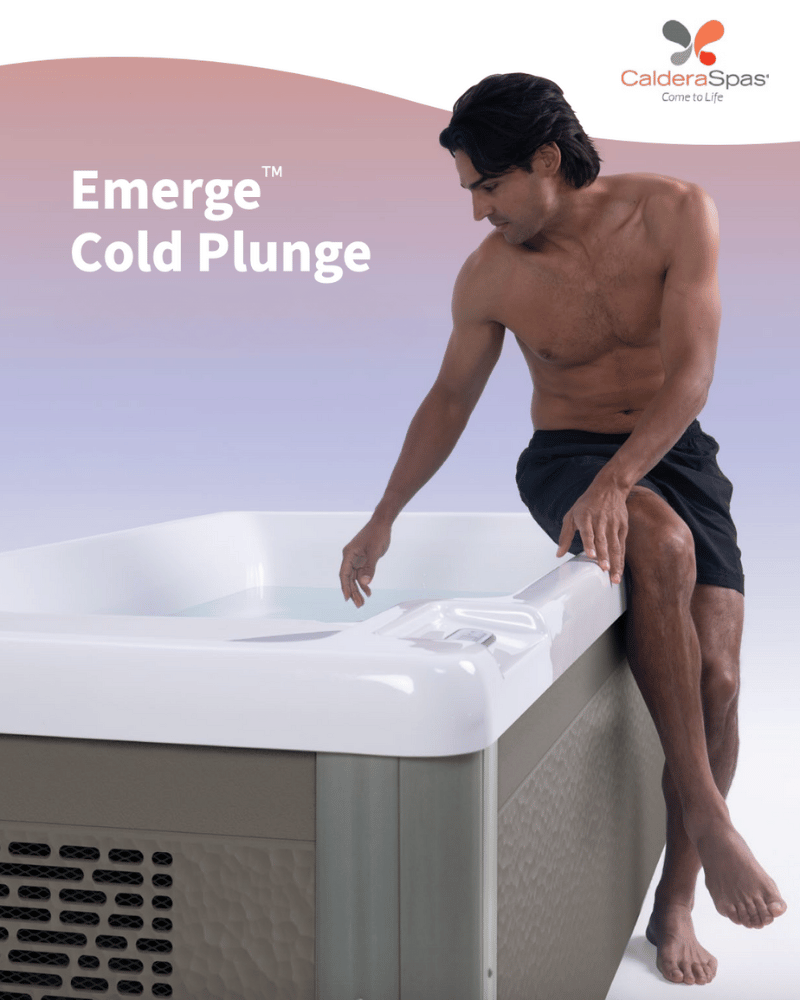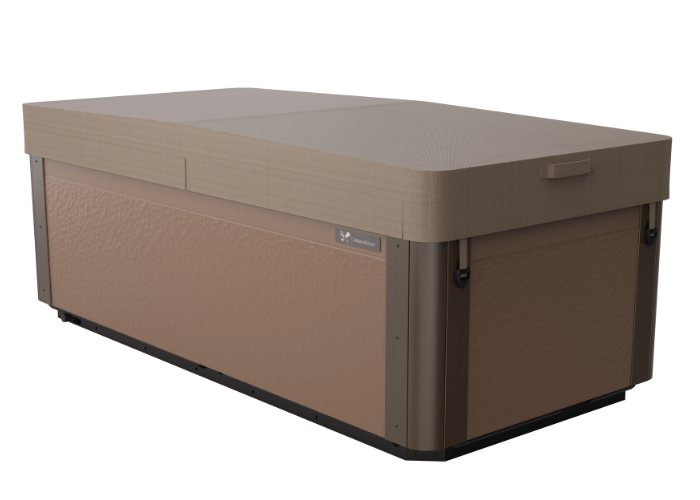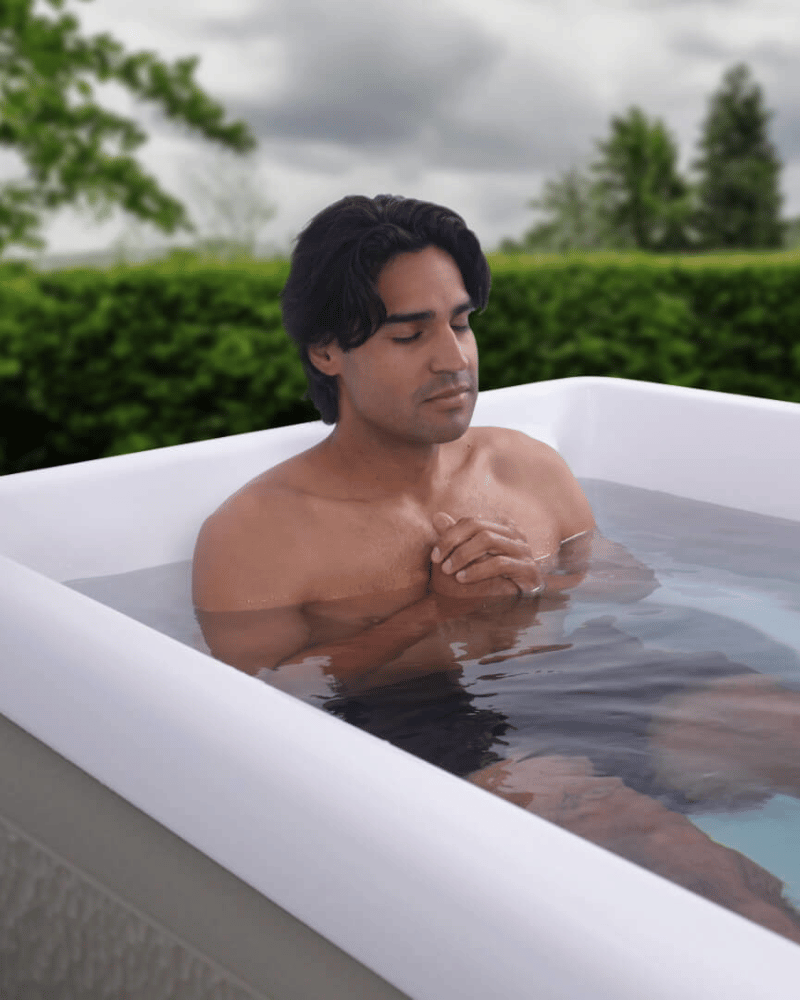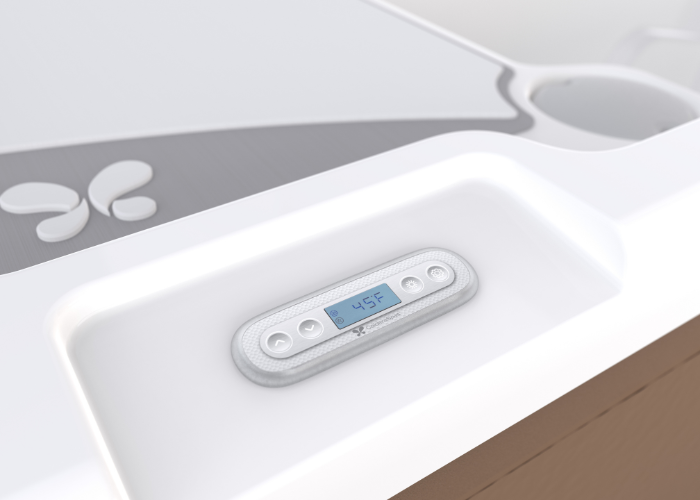How to Cold Plunge: A Beginner's Guide to Building a Cold Therapy Routine.

Transform Your Wellness with a Cold Plunge Routine
For centuries, people have embraced water as a method of healing, renewal, and transformation. Cold plunging, a practice once reserved for elite athletes, is now gaining popularity as a holistic wellness ritual that restores balance, clears the mind, and revitalizes the body.
By making cold plunging part of your regular self-care practice, you can experience benefits like improved recovery, relief of sore muscles, and mood enhancement. Beyond the physical, immersing yourself in cold water can help you release stress, enhance mental clarity, and allow you to meet life’s challenges with grace and resilience.
At Affordable Hot Tubs 4 U in Redding, CA, we’re here to help you discover how cold therapy can enhance both body and mind. Whether you’re new to cold plunging or ready to take your wellness routine to the next level, we’ll walk you through the essentials — why it works, how to begin, and how to create a cold plunge routine that is both enjoyable and transformative.
How Cold Plunging Works: Wellness Benefits for Mind and Body
If you’re seeking calm, better health, or personal renewal, cold plunging invites you to be present, embrace the moment, and emerge transformed. According to insights from the Huberman Lab at Stanford University, cold exposure can lead to significant improvements in both mind and body. Sounds appealing, right? Let’s explore how regular cold exposure can elevate your wellness routine in just a few minutes a week:
Cold Therapy Can Soothe Aches and Aid in Muscle Recovery
Cold plunges may help support muscle recovery by providing a cooling effect that soothes tired muscles after physical activity. Whether you’re recovering from an intense workout or unwinding after a long day on your feet, this practice helps your body reset so you can return to the activities you love feeling refreshed and restored.
Clear Your Mind & Find Your Center
A few moments in cold water can help quiet mental noise, ease stress, and sharpen focus. Here’s the science behind it: According to a study published in The Journal of Neuropsychiatry and Clinical Neuroscience, cold plunging naturally boosts neurotransmitters like norepinephrine and dopamine, which are linked to enhanced mood, motivation, and mental clarity. Many people who practice cold plunging report a sense of calm and well-being that stays with them for hours afterward.
Enjoy More Energy to Embrace Your Day
Cold plunges can invigorate your body by activating its natural processes, helping you feel more alert and energized. Depending on your personal tolerance and overall health, cold plunging may leave you feeling refreshed, revitalized, and ready to take on whatever the day brings.
Build Resilience Inside and Out
Cold immersion acts like a reset button for your nervous system. According to a study published in the International Journal of Environmental Research and Public Health, consistently exposing yourself to cold in a controlled environment helps your body and mind adapt to stress more effectively. The study found that cold therapy can improve your overall stress response, allowing you to feel calmer and more in control—both in and out of the water. When practiced regularly, pushing through the mental challenge of cold immersion can help you navigate life’s everyday stresses with greater ease and confidence.

Getting Started: What You Need for a Cold Plunge
Before you take the plunge, set yourself up for success. Here’s what you’ll need:
A cold plunge tub – A dedicated cold plunge, like the Caldera Spas Emerge™ Cold Plunge available at Affordable Hot Tubs 4 U, ensures optimal temperature control and ease of use.
An electrical connection – If using a powered plunge tub, make sure you have a proper electrical setup.
A robe or warm clothes – Your body will need to warm up after exiting the water. Have a cozy robe, towel, or heated blanket ready.
Music and aromatherapy to enhance your experience – Set the stage for a transformative experience with soothing music and calming scents.
Creating a Cold Plunge Ritual That Works for You
Incorporating cold plunging into your wellness routine can provide incredible benefits — but consistency is key. Whether you’re an athlete looking to recover faster, someone seeking a mental reset, or simply curious about cold therapy, starting small and building gradually is the safest and most effective approach to this refreshing wellness ritual.

Cold Plunge Q&A: What Beginners Need to Know
What’s the best way to start cold plunging?
Start slowly to allow your mind and body to adjust to the cold water. Begin with water temperatures between 50-60°F and limit your first few sessions to 1-2 minutes (or less). As your body adapts, you can gradually extend your time and lower the water temperature.
How long should I stay in the water?
The most important thing when cold plunging is to listen to your body. Everyone has a different tolerance to cold, so don’t compare yourself to others. Give yourself time to adjust to your new wellness practice. Here are recommended guidelines for starting a cold plunge routine:
Beginners: Start with 1-2 minutes at a comfortable temperature (about 60°F).
Intermediate: Work your way up to 2-3 minutes as tolerance builds.
Advanced: Many plungers aim for 3-5 minutes and may do multiple sessions with warm-up breaks in between.
Whether it’s your first plunge or your fiftieth, always pay attention to your body and don’t push yourself too hard. If you experience shivering, numbness, dizziness, headaches, or neck pain, exit the water immediately and allow your body to slowly return to its normal temperature.
How often should I plunge?
Beginners should start with 2-4 sessions per week, gradually building tolerance. Aim for a total of 11 minutes per week to provide optimal benefits while minimizing the risk of overexposure.
Consistency is key — regular practice helps your body adapt and allows you to maximize results.
How can I make cold plunging easier?
Mentally reframe the experience by viewing the initial discomfort as an opportunity to build calmness and resilience. Use slow, rhythmic breathing techniques to help manage the shock and acclimate to the cold. Deep inhales through the nose followed by slow, controlled exhales can help regulate your body’s response. If the cold feels overwhelming at first, start at the higher end of the temperature range (around 55-60°F) and gradually work your way lower.
Plan a pleasant recovery ritual, such as wrapping up in a thick towel or robe, doing gentle stretches, or enjoying a warm cup of tea.
What temperature should the water be?
When it comes to water temperature, start slow and work your way down over time. Colder isn’t always better — it’s important to find the balance between maximizing wellness benefits and finding a temperature your body responds best to.
Beginners: Start at 50-60°F to allow your body to adapt.
Intermediate: Progress to 45-50°F as you become more comfortable.
Advanced: Some experienced plungers go as low as 40°F, but it’s important to lower temperatures gradually and stay within your tolerance.

How can I enjoy my cold plunge safely?
Listen to your body. Cold exposure should challenge you mentally and physically, but it should never feel overwhelming. Gradual adaptation is the safest approach. It’s always wise to consult your doctor before beginning any new wellness activity.
- Watch for warning signs. If you feel lightheaded, experience numbness, or start uncontrollably shivering, exit immediately.
- Exit carefully. Cold water can affect coordination and muscle control. Move slowly and cautiously when stepping out.
- Consider plunging with a partner or having someone nearby. This person can provide moral support or assist if you need help.
- Warm up properly. Avoid sudden temperature changes immediately after plunging. Instead, dry off, change out of your wet swimsuit, put on a warm robe or comfortable clothing, and try gentle movements like a short walk or yoga stretches to get your blood flowing.
Before starting any cold plunge routine, consult your doctor to ensure it’s safe for you, especially if you have underlying health conditions, circulatory issues, or sensitivity to cold exposure.
